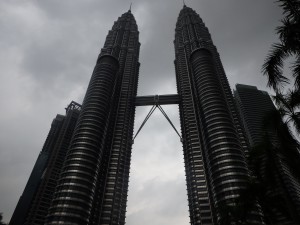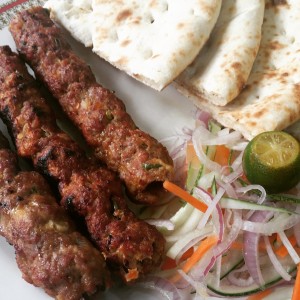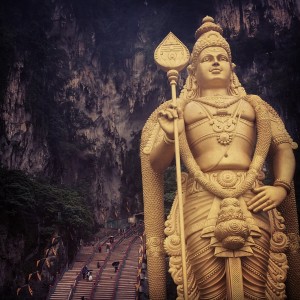 Kuala Lumpur is the capital of Malaysia, situated a short flight from Bangkok, is the perfect place to check out when your wanting to boarder bounce for a visarun.
Kuala Lumpur is the capital of Malaysia, situated a short flight from Bangkok, is the perfect place to check out when your wanting to boarder bounce for a visarun.
I recently ventured there for four days, and the biggest thing I was looking forward to was a change of pace with food. Living in Thailand, especially in a rural area like I do, the variety of food is limited pretty much to Thai only.
So the prospect of going to KL and experiencing the wide array of cultural food was high on my list.
With this in mind, I booked a hotel in Bintang. Bukit Bintang is well-regarded as Kuala Lumpur’s trendiest shopping and entertainment district, offering everything from sleek shopping centres and five-star hotels to all-day restaurants and vibrant nightclubs.
 Thanks to its central location, it is also fairly easy to get to Bukit Bintang from anywhere in Kuala Lumpur via public transportation, including monorail, taxis, and buses.
Thanks to its central location, it is also fairly easy to get to Bukit Bintang from anywhere in Kuala Lumpur via public transportation, including monorail, taxis, and buses.
The side streets in Bintang offer everything to eat from traditional Malay, Indian, Turkish, Syrian and much more. The prices are obviously more expensive than Thailand, but only by maybe 25% so not enough to break the bank.
Being able to eat Indian beef kebabs and naan bread for breakfast, washing them down with a chilled mango lassi was for me one of the massive highlights to the visit.
Whenever you plan to visit a new country, you always need to work out what you want to see with your time, and for me visiting KL on a short schedule the list was short.
The main attractions I wanted was Petronas Towers and Batu Caves, due to my overly excitable nature when it comes to caves.
Batu Caves is Malaysia’s most distinctive geographical features, located 25min by Uber from the city center whose awe-inspiring natural caverns are reachable by a calf stressing test of 272 steps.
 Inside you will see many Hindu shines which is a nice change of pace from all the Buddhist temples in Thailand.
Inside you will see many Hindu shines which is a nice change of pace from all the Buddhist temples in Thailand.
Petronas Towers in the central business district were designed by Argentine architect Cesar Pelli. They chose a distinctive postmodern style to create a 21st-century icon for Kuala Lumpur. Planning on the Petronas Towers started on 1 January 1992 and included rigorous tests and simulations of wind and structural loads on the design.
Seven years of construction followed at the former site of the original Selangor Turf Club, beginning on 1 March 1993 with excavation, which involved moving 500 truckloads of earth every night to dig down 30 metres (98 ft) below the surface.
[sm-youtube-subscribe]
